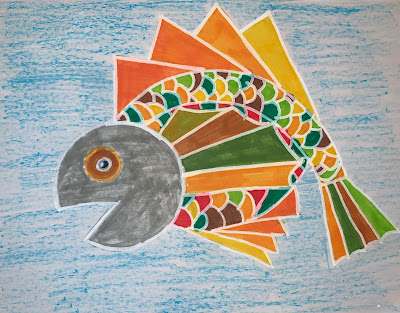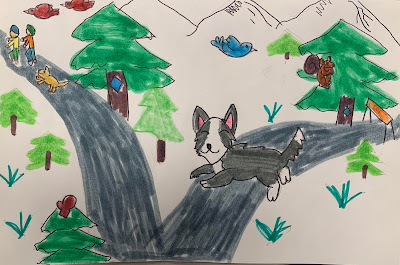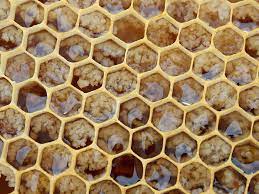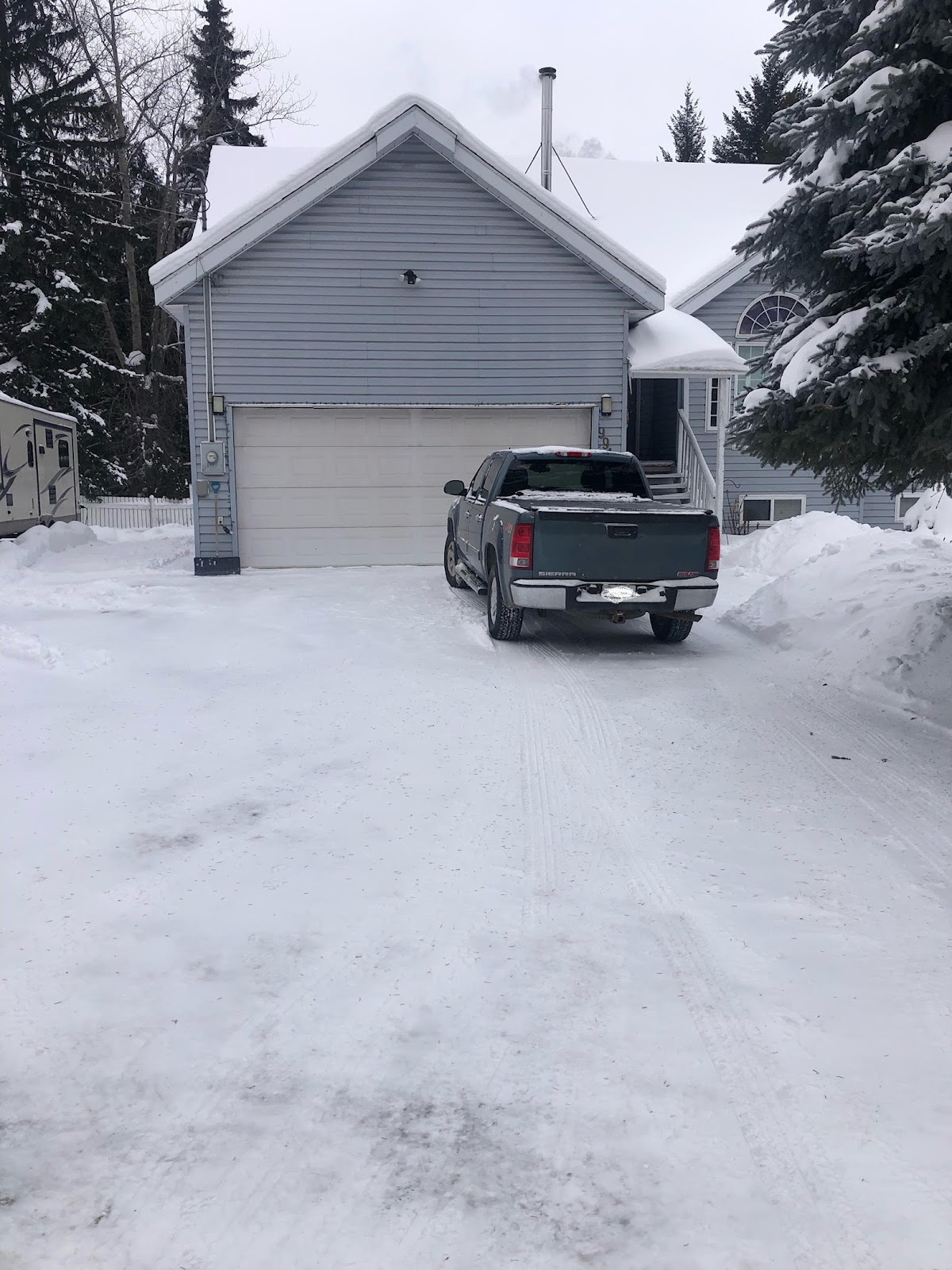I am travelling and away this next week so have completed the week 4 work early and with the materials that I have available to me.
In the introduction for the week, Gerofsky discusses the history of the divide between science/math and arts/literature, there is a question: "is it worth asking ourselves why contemporary mainstream culture in places like Canada and the is quick to separate people into 'math people' and 'arts people', and to look askance at work that bridges these 'two cultures'" (Gerofsky, 2024). This question really stood out to me as I often have experiences where people call themselves either 'math people' or 'artsy people' and I have never understood why one could not be both. If I had to put myself into one of these categories I would say that I am more of a math person however I do enjoy art as well (although I am not great at it) and spend a lot of my free time knitting and crocheting. When I think of these artsy activities I can easily see the bridge between the math and the art, perhaps why me as a 'math person' enjoys them so much? I don't think there needs to be this divide between the two "cultures" as they are both beautiful in their own ways and should be open to all who want to engage with them whether they see themselves as that type of person or not!
___________________________________________________________________________________
Reading Reflection
Thomas, D., & Schattschneider, D. (2011). Dylan Thomas: Coast salish artist. Journal of Mathematics and the Arts, 5(4), 199–211. https://doi.org/10.1080/17513472.2011.625346
This reading dives into the artwork and inspiration of Coast Salish Artist Dylan Thomas. The introduction begins with a background on Coast Salish art and the fact that it almost died out as traditional cultures. Recently, artists have been working on a renaissance of this style of artwork, Dylan Thomas is one of the youngest artists working towards this rebirth of his cultural art. The artwork takes on a modern style using elements of cycle, crescent and trigon. At 19 years old, Thomas learned to make pendants, earrings, bracelets and rings from a master artist. He then went on to work with three other influential artists who taught him carvings, prints, jewelry connected to myth and legend, carving totem poles and how to revive Salish art.
The remainder of the reading, Thomas discusses various pieces of his artwork and Doris Schattschneider explains the mathematical elements of the art. Dylan explains six artworks that he has done or in the process of completing. His first is a Escher style tessellation with traditional Salish design of a spinning whorl, the subject he chose was his mentor-apprentice relationship and he uses salmon as it is sacred to the Salish people. Other artworks include a connection to the depletion of salmon in the world; house posts as welcoming figures for homes; reflection symmetry using vertical and horizontal mirrors; a cross-cultural mandala; and his new work an infinity tessellation.
In his explanation of his first tessellation artwork Thomas says that "the problem was that I had no further education in mathematics past grade 12 and had no idea how to create a tessellation. I spent days staring at Escher's symmetry drawings such as his butterfly and lizard tessellations and from these, soon figured out how I could make a tessellation" (Thomas& Schattschneider, 2011, p. 202). This stood out to me as Thomas expresses how he struggled from having no math experience beyond grade 12 so did not know how to create a tessellation. When I think about my university math experience, I was not learning how to create tessellations and can only think of these being used in elementary classrooms. While he didn't have the math skills for this, Thomas used what he could and learned how to create the tessellation. I think this really shows how we can bridge the gap between people being 'math people' or 'art people' just because someone may be better at one than the other doesn't mean that they cannot do anything related to the opposite.
Thomas uses Salmon in a few of his pieces of art, in his explanation of Salmon Spirits he says that it is connected to the depletion of salmon in the world. "Due to climate change and other environmental factors, the number of wild salmon has declined considerably over the past few decades" (Thomas & Schattschneider, 2011, p. 204). In our last class on connecting math to social and ecological justice my group members and I completed our first project on the decline of salmon. Through this project I learned a lot about the factors affecting the salmon population in British Columbia and the world and this really opened my eyes to some of the issues that are occurring out of the eye of the media. Seeing how an artist took an issue such as this one and created pieces to demonstrate the significance of salmon to their culture, the art shows the crowding of salmon in the spirit world and how there is need for preservation and increase of salmon. So often in creating lessons we focus on the content but this made me think about how showing students these artists work in conjunction with issues in our world can help them to understand the issue both on another level and from a different perspective than that of the educator.
Questions:
- Do you think of yourself as more of a 'math person' or an 'art person'? In what ways do you see yourself as both?
- Have you used artwork (done by other artists or the students themselves) to help students understand lessons or concepts better?
___________________________________________________________________________________
Activity
I chose to explore two artworks this week but was only able to recreate art that I could use paper coloring as I have limited art supplies available to me.
I was assigned to the 2019 bridges conference: https://gallery.bridgesmathart.org/exhibitions/2019-bridges-conference
The first piece of art that I chose to replicate was from Flora Olivier, this fish piece was created using only a compass and a ruler. Olivier (2019) explains that "it was real fun to find creative ways to deal with the limited degrees of freedom afforded by the two basic construction tools."
I didn't have the same colours as the artist did for this piece however I limited myself to using a compass and a ruler for the entire project aside from drawing the scales on the fish. I found it a challenge to create similar curves and attach the straight lines in a way that was proportionate to the artwork of the fish. This project allowed me to see the mathematics in the curves and lines of geometrical shapes, I also found myself exploring proportionality as I had to make my fish fit on the page, but also the curves I drew needed to work with one another that would make my replica look accurate and less wonky.
 |
| My version of Flora Olivier's 'Pisces Geometricus' |
I enjoyed this activity so decided to choose a second artwork to replicate. This one is by Emanuela Ughi. The original piece of art is a wooden puzzle based on the seed of life. The colours used in the artwork are the colours of Mondrian who I have learned in a Dutch painter. In the art description Ughi (2019) states that "straight lines and circles are the only curves, in the plane, that have a continuous group of isometries." This artwork explores geometry using only circles to create patterns based on different combinations of shapes and colours.
In replicating this piece of artwork I used one circular object to trace, the top left image was the easiest to replicate however as I worked on others I found that even though they look more confusing, they all use the same basis of organization with different circles integrated into it. I was exploring shapes and patterns while I replicated this piece.
 |
| My version of Emanuela Ughi's 'The Stijlish Seed of Life' |
This weekly activity inspired me to see more connections between art and mathematics, both in purposeful connections and less intentional connections. As discussed in the introduction for this week, connecting art and mathematics bridges the gap that we often see between these two realms. When we connect these two "cultures" we are opening up so many possibilities for creativity and mathematical beauty, something that we shouldn't actively be trying to avoid!













